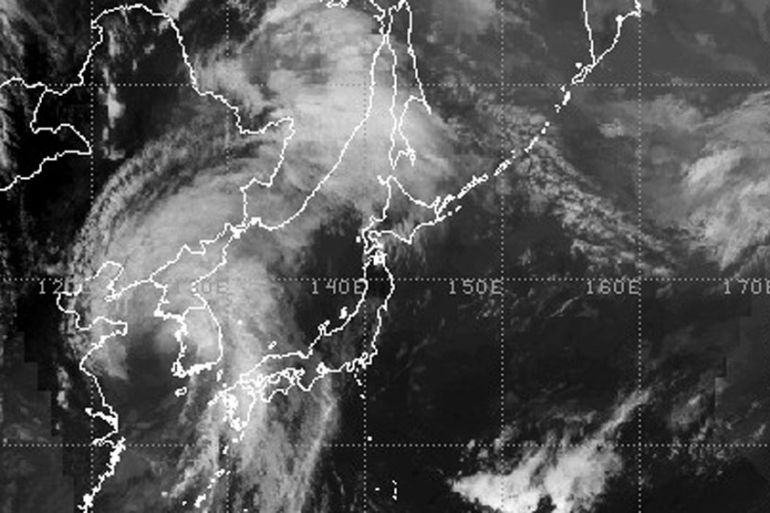The collapse of Typhoon Chan-hom
Shanghai escapes significant typhoon damage as decline in strength seems to have happened in hours.

As a traditional category 4 typhoon, as measured on the international Saffir-Simpson Scale, Chan-hom caused major flooding and some wind damage in the eastern Chinese province of Zhejiang.
Yet now, 36 hours later, satellite pictures show half of this storm apparently missing. Cloud to the southwest of the centre has virtually all evaporated.
Keep reading
list of 4 itemsWorld’s coral reefs face global bleaching crisis
Why is Germany maintaining economic ties with China?
Australia’s Great Barrier Reef suffers worst bleaching on record
The forecast track for the typhoon was, consistently, directly towards the Chinese coast, just south of Shanghai, followed by a right turn into the Yellow Sea, using Shanghai as the pivot point and slowly to lose strength. This happened, but the decline in strength that would normally be gradual, actually seems to have happened in very few hours.
On the approach to Shanghai, the highest gust reported was 180km/h in Shipu harbour, south of the coastal city of Ningbo.
310mm of rain fell in Dinghai, on the island of Zhoushan in Hangzhou Bay. This represents the damaging amount that flooded the fields and ruined crops.
Yet in the city of Shanghai, 100km across the Hangzhou estuary, the maximum gust recorded was 68km/h and the most rain recorded was 66mm. Shanghai remained on the western side of the typhoon the side that collapsed. It stopped raining and the wind dropped before 21:00 GMT.
The rapid decline in the strength of the typhoon also led to a drop in the height of the storm surge. The eye of Chan-hom passed over Dingbo, which had seas over the harbour walls, but no higher.
The waters off the Yangtse delta and southern Yellow Sea are too cold, at 21C, to supply the voracious appetite for warm moisture that a typhoon demands. In fact the 26C necessary to sustain such a big storm is 300km off the Chinese coast.
Despite significant and rapid weakening, the tropical storm is battering the Shandong Peninsula. This spit of land pointing into the Yellow Sea has suffered gusts of 83km/h and 131mm of rain in 30 hours.
The Korean peninsula is next in line for gale force winds and significant rain. Big waves are already apparent off the coast near Busan.